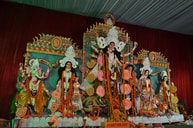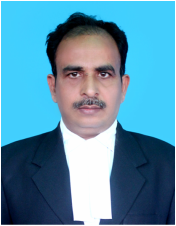
This year on 30th September, Saturday, we will celebrate Dussehra or Vijay Dashmi with great enthusiasm. Here, I write some of it’s mythological stories why we celebrate this.
In different corners of the World different festivals are observed round the year. It brings about social unity and communal harmony and at the same time, it gives pleasure and amusement. Festivals are important part of society. Different festivals are celebrated by different regions and different religious groups. Each and every festival has its’ own significance. Like National festivals (such as Independence Day, the Republic day, Gandhi Jayanti, Children’s day, Teachers’ day etc.), Indians of different groups observe festivals of their own (such as: The Christians of India celebrate their Christmas, the Good Friday. Shikhs observe the birthday of Guru Nanak. Farmers of India observe the occasion of new harvest. The Muslims observe their festivals like Id-ul-Fittar, Id-ul-zuha, Ramzan, Moharrum etc.).
Among the festivals observed by Hindus, Durga puja, Dushera, Ramlila, Diwali, Holi, Rath Yatra, Saraswati puja, Ganesh puja, Shiv Ratri, Ram Navami, Janmastami are very famous.
The festival of Duga puja is celebrated mostly in Bengal and Odisha.Durga puja is celebrated as Dushera in the Northern and Western provinces of India in another style (like Garva). It is celebrated with great jubilation throughout the country. Schools, colleges, offices and other organizations remain closed during that period.
The mythological Backgrounds
First Story: The legend goes that Sri Ram Chandra supposed to be an incarnation of Lord Bishnu went to Sri Lanka to rescue his wife Sita, imprisoned by Ravan, the most powerful warrior in the World. Despite his best efforts Ram failed to defeat Ravan. Ram was advised to appease Mother Durga and win her blessings to kill Ravan. Ram offered puja to Goddess Durga solemnly and with all sanctity with one hundred eight blue lotuses. Mother Durga was pleased with his puja and granted him, his wish that he would now be able to killing. On the day of Dushera, Ram killed Ravan and rescued Sita from her imprisonment.
The Hindus believe that the Divine Mother, who could bless Ram, may also bless them and take away their evils and misfortunes. So they worship her at the same time of the year and in the same manner as Ram did in the past.
The festival is observed for four days. It starts on the seventh day of bright fortnight of Aswin and continues up to tenth day which is called Dushera. Beautiful images of the deity are built with straw, clay and color. Those are adorned with fine clothes, ornaments and flowers and placed on the decorated altars. Then the ceremonialworship starts. The last puja is held on Dushera day and the images are carried in a great procession for their immersion in the river. This is called immersion ceremony and the whole festival ends here.
The Second Story: The story says that demon king Mahisasura was greenfly a wish by Brahmadev and became immortal. He and other demons terrorized people for no fault of theirs. He was invincible and not to be killed by any man, god or woman of ordinary birth. God and goddesses were at a loss to decide what to do. All of them went to Bishnu, the Almighty God and prayed to Him to find out a way of his death. According to His advice, all of them prayed together. Their prayer worked wonders. Out of the space was born Mother Durga with enormous vigor and uncommon beauty. On Her request the gods and goddesses gave their weapons to Her. She now became too powerful to be vanquished. On the tenth day of full moon of Awina, She killed the demon king and saved the earth as well as gods and goddesses from hi persecution. Since then people have been worshiping Mother Durga with a view to pleasing Her and winning Her blessings for fulfillment of their desires.
The festival comes off in the month of Aswina when the earth is clad with the loveliest autumnal beauty. The image of Durga is not worshiped alone. With Her are worshiped Lord Shiva,Her husband, two sons Ganesh and Kartikeya and her two daughters, Laxmi and Saraswati. The idol of Durga stands majestically on a pedestal. She stands in a great posture, with one of Her foot firmly planted on the chest of demon Mahisasura.
The celebration continues from sixth day to the tenth day of maxim moon. On the tenth day comes the Bijaya-Dasami when the idols are immersed in the riv


 RSS Feed
RSS Feed

















